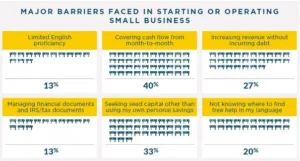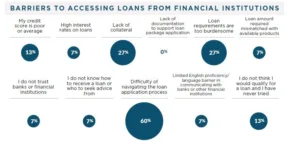by Ange Hwang, Asian Media Access
Preface: The METRO Blue Line Extension light rail transit project will extend the existing Blue Line Northwest from Target Field Station to Brooklyn Park and connect communities along the way. But this is an effort 20 years in the making, a major infrastructure change with very limited involvement from Asian American and Pacific Islander (AAPI) Communities. When it comes to big issues that are important to AAPIs, transportation doesn’t always spring to mind first. Other matters such as civil rights, immigration, education, health care and small businesses have historically been at the forefront of concern.
But if we think further, transportation plays a huge role in revitalizing, reshaping, and defining communities – especially when it comes to public transportation. Transportation is all about improving mobility, connecting people and places to each other, and making communities accessible. The way in which transportation systems are created, supported, and operated helps businesses succeed and neighborhoods thrive. Green Line going through University Ave has demonstrated such success in developing the cultural destinations, known as Little Mekong and Little Africa.
2024 will be a big year for the METRO Blue Line Extension project, many detailed plans and routes will be completed for local review and approval, it is a great time to call for a potential AAPI Cultural Corridor along the Blue Line, as we work together to advance this generational transit investment for corridor communities.
***********************
AAPI Business Snapshot
When it comes to business, the AAPI economy in Minnesota is an estimated of $18 billion according to Dr. Bruce Corrie, Professor of Economics at Concordia University. AAPI business ownership has grown rapidly in the last decade. According to most recent data from the Small Business Administration’s Office of Advocacy, there are now approximately 21,000 AAPI-owned businesses in Minnesota, nearly double the 11,000 AAPI owned businesses reported in 2007.
Compared to their white counterparts, however, AAPI business owners make less in average annual sales. The disparity is particularly pronounced in employer firms, or businesses that have employees besides the owner.

Image Courtesy: National CAPACD
In 2017, for example, the average annual sales of Asian-owned employer firms were only40% of that of their white counterparts. (1) Not much information is available on the industry sectors of AAPI-owned businesses. One recent survey performed by National Coalition for Asian Pacific American Community Development (National CAPACD) found that 67% of Asian businesses in Minnesota are in the accommodation and food services sector, followed by 20% in retail trade, 7% in admin support, and 7% in other services excluding public administration. (2)
Barriers AAPI Businesses Face
AAPI business owners report a variety of barriers faced in starting or operating a small business. That same survey by National CAPACD found that 40% of respondents reported covering month-to-month cash flow as a major barrier to starting or running a small business. Other barriers include seeking seed capital other than personal savings (33%),and not knowing where to find free help in their native language (20%).

Image Courtesy: National CAPACD
Language barriers may play a role in increasing the challenges for Asian Pacific Minnesotans to start and operate small businesses. As of 2021, under 60% of Asians in Minnesota were born in another country, making it likely that they come here with limited English proficiency and unfamiliarity with U.S. business practices. This can exacerbate barriers to running a business. Take covering month-to-month cash flow, for example, the top barrier reported in the National CAPACD survey. Small businesses often use conventional or SBA7(a) loans to cover initial start-up expenses and supplement early-stage cash flow shortages. Someone with limited English and little knowledge of the US banking system, however, may find it more difficult to take advantage of these funding sources.

Image Courtesy: National CAPACD
AAPI Cultural Corridor
With such successes and challenges in mind, Asian Media Access likes to propose to utilize the Cultural Destination idea, launch an AAPI Cultural Corridor, bank on the potential transit development resources along the Blue Line.
Developing areas rich in culture into cultural destinations can bring jobs to low income neighborhoods or immigrants. The unique aspect of this strategy is that it builds on existing cultural assets and uses marketing and branding to create a destination place for visitors who want to experience something different. It also inspires the local community to come out and support these efforts, as they see their own culture being celebrated in visible ways. One gets a sense of this when visits the Little Mekong Night Market or Little Africa Fest. According to the research of festival participants funded by the McKnight Foundation revealed that the Little Africa Fest drew people from 15 cities and 32 zip codes. It also helped market the local businesses to the larger community.
Cultural Entrepreneurs integrate their cultural assets into their entrepreneurial activities offering a unique cultural experience while serving the needs of customers. Research also shows that when these businesses grow, they tend to employ people from their community and the entrepreneurs take on positive roles in the community. Ethnic restaurants, especially those that served the ethnic market, usually offered an affordable options for neighbors, and cultural craft merchandises, on the other hand, provide vibrant colors and designs reflected in cultural fashion and accessories.
According to Dr. Bruce Corrie, the core elements are needed to progress this new economic development tool:
- First, mainstream policy makers and funders need to understand the unique potential of this strategy. The experience with the World Cultural Heritage Corridor in St. Paul Midway area offers an ocean of strategies for economic development for low income neighborhoods that are rich in cultural assets – developing cultural destination places that in turn bring wealth and job creation for the residents of those neighborhoods.
- Second, public and private investment is needed to help build the cultural infrastructure in the form of facade improvements on buildings, as well as development of cultural concepts such as murals on buildings that help create a sense of place.
- Third, the AAPI businesses need technical assistance to cater to mainstream customers who want a different experience but in a culturally and emotionally safe setting.
Please join us for another rich discussion with AAPI business owners in Feb 16th, featured Dr. Bruce Corrie as the keynote speaker, so we all can work together to expand this Cultural Destination idea into a reality!!
AAPI Economic Development Summit, Part II
DATE/TIME: Friday, February 16, 2024,10:00am-1:00pm, Lunch served.
PLACE: Brooklyn Park CAC (Community Activity Center), 5600 85th Ave N, Minneapolis, MN 55443, at Gardenview Room.
RSVP: [email protected]

References
- Federal Reserve Bank of Minneapolis. Despite recent gains, Minnesota’s entrepreneurs of color facepersistent barriers. Accessed November 2023. https://www.minneapolisfed.org/article/2021/despite-recent-gains-minnesotas-entrepreneurs-of-color-face-persistent-barriers
- National Coalition for Asian Pacific American Community Development. Small Business, Big Dreams.Accessed November 2023. https://www.nationalcapacd.org/data-research/small-business-big-dreams/


